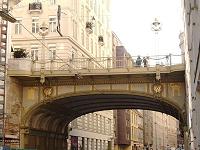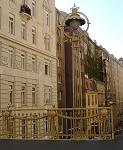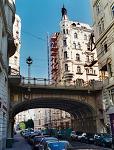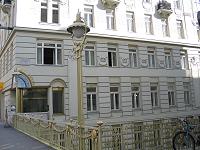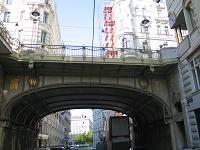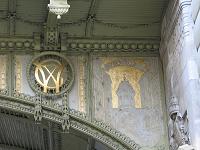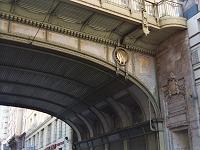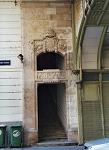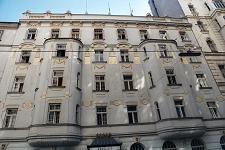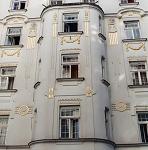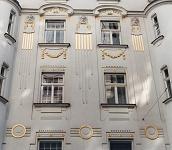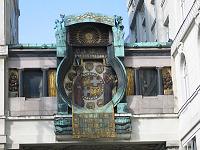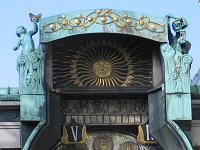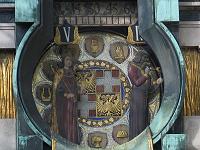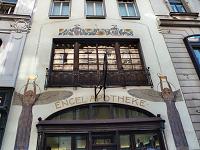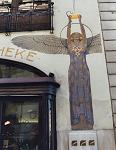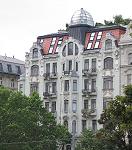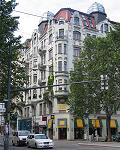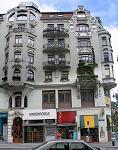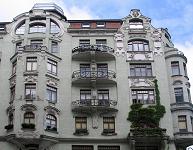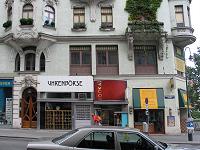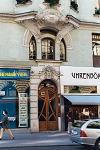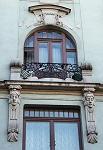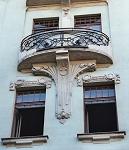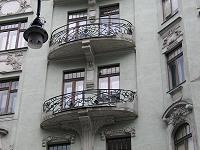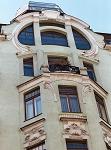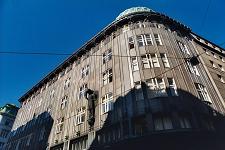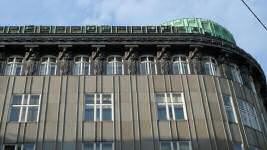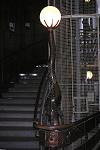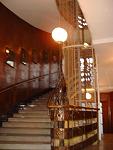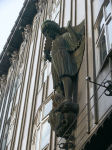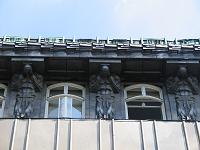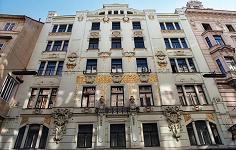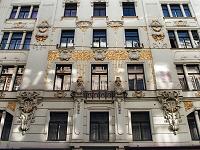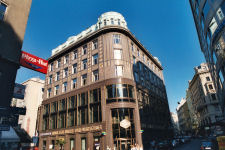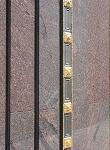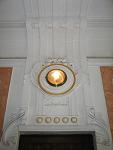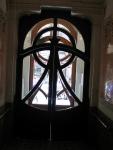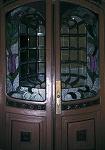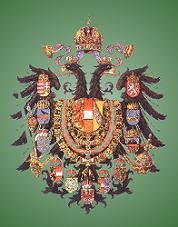The Belle Epoque in Europe
Austria
Vienna: Ancient Town Centre
Josef Hackhofer
"High Bridge" and "Deep Ditch" (1903/04)
Since the Roman Empire already there is a bridge on this place leading over the Tiefer Graben (Deep Ditch) where the Ottakring brook ran and still runs (canalized under the street since the XIXth century). It is called Hohe Brücke (High Bridge) since the Middle Ages. In the 1850s, when widening the Wipplingerstraße, a neogothic bridge was built and demolished again in 1903 because it had become dilapidated, so it was replaced by this new Hohe Brücke.
Josef Hackhofer from Carinthia had already built several other bridges in Vienna over the Vienna river and the Danube canal in cooperation with Friedrich Ohmann and Otto Wagner. In this place, he profits in a skillful way of the exposed urban situation. From the Wipplingerstraße, it looks like a bridge decorated in a luxuriant floral Jugendstil whereas from the Tiefer Graben, the elegantly shaped arch gives to it the character of a (town) gate. The iron construction with the marble tiles was probably inspired by the underground pavilions of the Karlsplatz which Otto Wagner had built some years ago.
Franz Matsch
Anchor Clock (1913)
Anchor Insurance Building, Hoher Markt
Musical clock with 12 "hour regents" of the Austrian history
Oskar Laske (1874-1952)
Pharmacy Zum weißen Engel (The White Angel, 1901/02)
Bognergasse 9
Oskar Laske was another student of Otto Wagner and besides a passionate painting artist. Corresponding to the pharmacy, the mosaics show two angels standing on stone pedestals lifting a remedy in a dish while Aesculapius adders wind around their arms. You could interpret them as figured pillars optically reinforcing the supporting parts of the wall. The delicate frame coming out of the dishes surrounding the mezzanine window underlines the functional separation of the house into the business and the residential part. The pharmacy still got the original equipment of the time when it was built.
Karl Stephann
Apartment House (1902)
Rotenturmstraße 29
Josef Plečnik
Zacherl House (1903-05)
Wildpretmarkt 2-4
The most beautiful part of the Zacherl house (which got its name from its owner) is in my opinion the elegant staircase. Anyway, another very interesting part is the façade covered in the "wagnerian" sense of the word with tiles of polished granite divided rhythmically by profile fillets. Very impressive as well is the vividly rounded angle for which the building was called "chestnut oven", and the statue of the archangel Michael created by Ferdinand Andri which was called "bug killer" because the owner was a naphthalene manufacturer. That's Viennese humour! Marvellous is also the roof ledge with the curved windows which is supported by majolica atlantes. In order to appreciate the Zacherl house in the right way, you should study the details - or look at it from far away.
